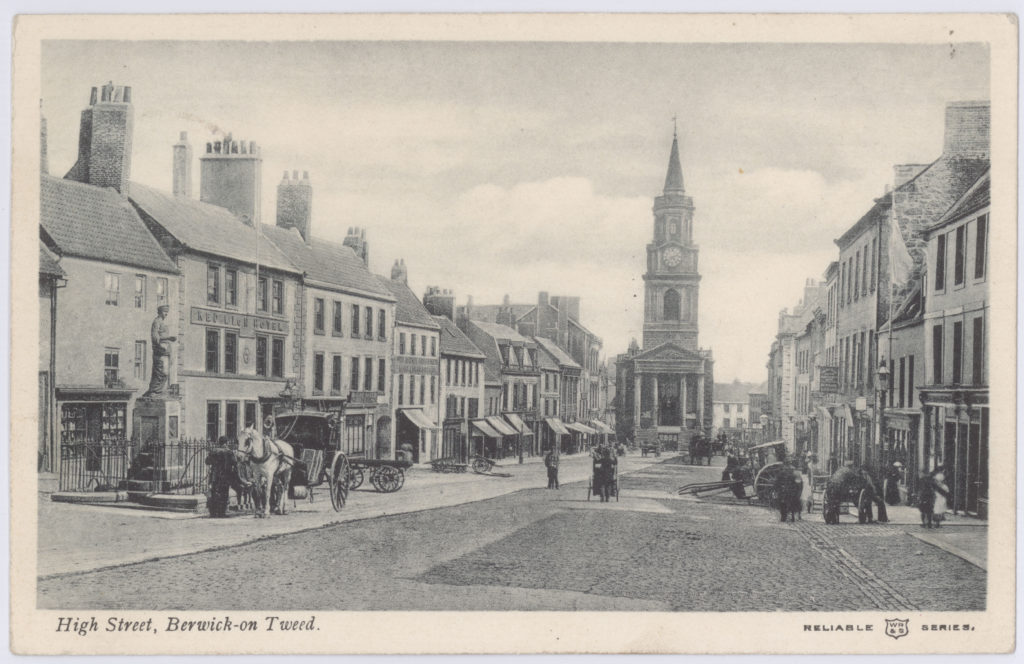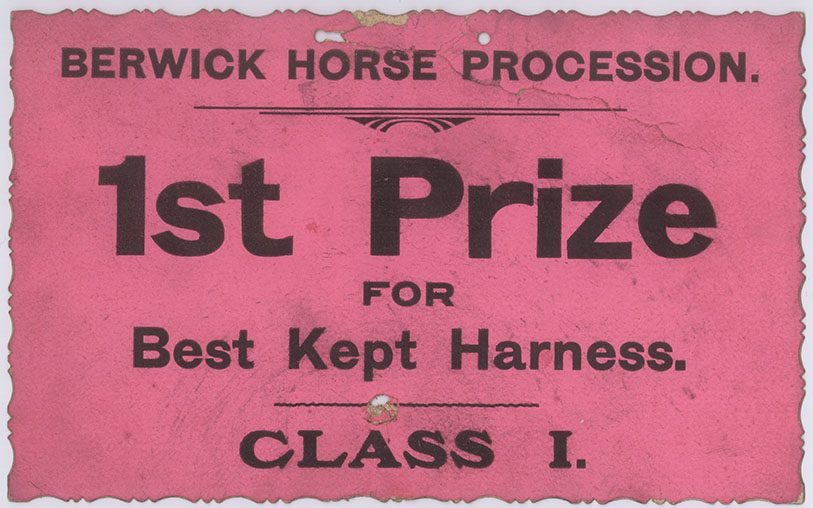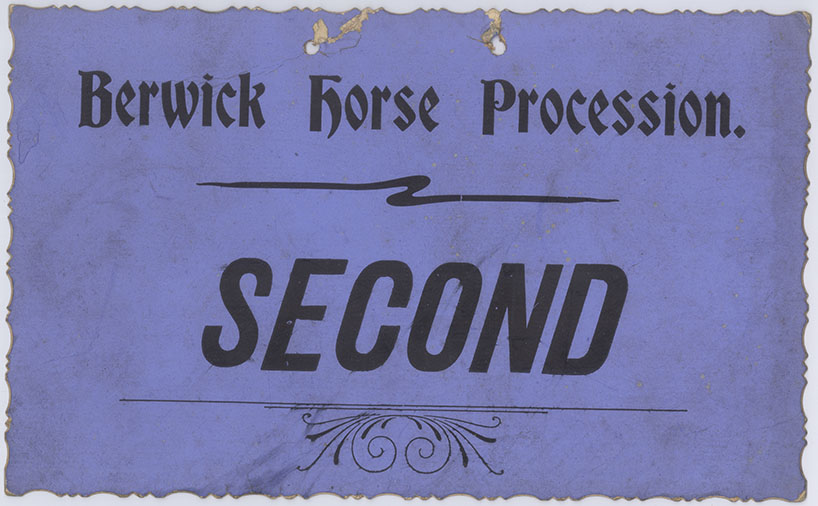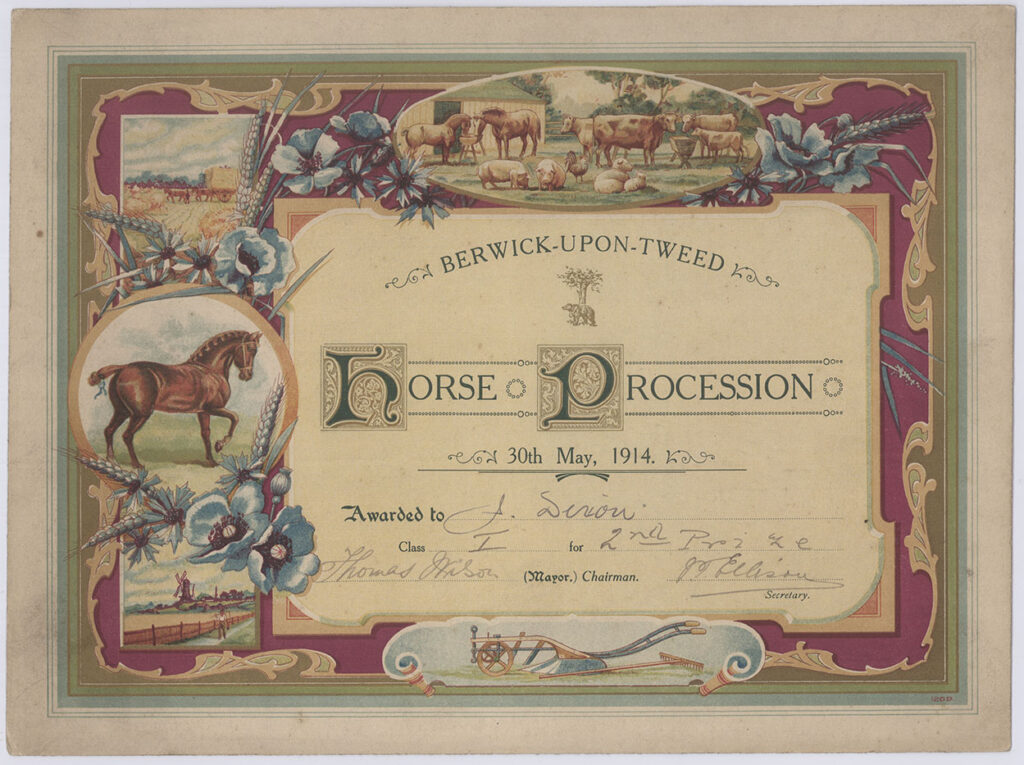
This guest blog has been written by Philippa Day.
I recently completed my MSc in Genealogical, Paleographic and Heraldic Studies at the University of Strathclyde. My dissertation focused on children who were admitted to Northumberland County Mental Hospital between 1900-1918. As my research had a genealogical focus, I was interested in investigating what these records could tell us about the children’s family backgrounds, reasons for their admittance and what happened to them. I was particularly interested in whether any evidence of family mental illness was documented in records and whether different diagnoses led to different consequences for the children. I also wanted to explore the usefulness of these records as a genealogical source.
Life in the Asylum
Case books are a valuable resource for gaining an understanding of asylum life for the children. All case notes contain entries concerning their health and wellbeing, initially with daily, then weekly comments. Depending on the length of stay these notes become less frequent, unless they have a period of ill health.
None of the children are ever referred to by their name in the notes. Instead, they are described in terms like ‘this little patient,’ ‘a quiet decent lad,’ or ‘well behaved little girl’ and in a few instances they are described in less favourable terms. Robert, who was admitted aged 10 on 17 July 1902 diagnosed with idiocy, is the only exception. Robert’s case notes indicate he had a nickname: ‘Palmy.’ From his case notes it is evident Robert is a character. Extracts from his records indicate he is constantly in mischief:
‘He is idle and mischievous. Does no work.’
‘A great nuisance on account of his teasing other patients.’
‘He runs about….and teases the feeble patients.’
‘Still persists in playing pranks on the other patients, knocking about, pulling faces.’
‘Mischievous and impudent. Idle. Popularly known as Palmy.’
‘This little idiot boy remains as mischievous and incorrigible as ever.’
Robert spent the rest of his life in the asylum, dying on 13 December 1919 from chronic nephritis. He was 27.
Case notes also indicate that some of the older children worked in the asylum. Some of the boys worked in the grounds and in the gardens, whilst others worked as painters, shoemakers, or on the farm. The girls worked in dormitories, cleaning or making beds, carrying dishes to the dining hall, whilst others worked in the laundry. Some also helped the younger patients in the dormitory.
There was a lot of evidence indicating that recreation played a large part in the children’s lives; many of the children are recorded as spending time in the ‘airing courts.’ William, admitted from Tynemouth Workhouse aged 10 on 7 March 1901, diagnosed with idiocy, was reported to have enjoyed dancing on a Tuesday night, watching billiards and attending cricket practice every night, where he enjoyed running after the ball. Other children showed interest in the weekly football match. Some of the girls enjoyed playing with dolls.
Often a child’s personality is evident in case notes, many described as mischievous, particularly as they teased other patients. Alexander, admitted on 13 July 1900 from Tynemouth Workhouse, aged 5 and diagnosed with idiocy, was described as being in constant mischief, once filling one of the keyholes with a piece of wood. The popularity of certain children is also evident; a few boys described as having established themselves as favourites with the inmates.
Outcomes
Sixty-four children died in the asylum: forty were boys and twenty-four were girls. Thirty-six were still children when they died and forty-seven had died by the age of 20. For those whose cause of death was known, thirty-five had phthisis/tuberculosis. Sixteen children died from epilepsy, as there were only limited medicines available at that time, including potassium bromide and chloral hydrate. A small number of children died from lung, heart or kidney issues, marasmus, or meningitis.
Forty-six children were discharged and eleven were re-admitted, then discharged or transferred. Four children who were re-admitted remained there until they died. Three children still accessed treatment in the asylum in the 1960s, now St. George’s Hospital, their records stating they were ‘regraded to informal.’
Some children spent most of their lives in other institutions. Rona, discussed in an earlier blog by Northumberland Archives in August 2022, was admitted on 14 March 1904, when she was only four years old. Diagnosed with idiocy with epilepsy, caused by ‘brain bruising’ at birth, Rona’s records stated that her grandfather had also been treated in the asylum. Rona was transferred to Sedgefield Asylum on 23 February 1905 and in 1921 was a patient in East Riding Mental Hospital.12 By 1939 she was a patient in Gateshead Mental Hospital. 13 Rona died there on 3 March 1946 age 47 from epilepsy.14
Norman was admitted aged 15 on 6 September 1910 diagnosed with dementia and was re-admitted again in 1912. After he was discharged in 1912, he enlisted in the Royal Field Artillery army as a driver, qualifying on 22 July 1915.15 Norman emigrated to Australia on 21 January 1922.16
Three children were identified as having children of their own once they were discharged, including Marion who was admitted aged 11 on 4 September 1912, diagnosed with melancholia. Marion married and had five children, dying in 1968.
Michael, who was admitted in 1911 aged fifteen, diagnosed with acute mania and re-admitted in 1914 diagnosed with primary dementia, stated that he wanted money to ‘give to all the poor on earth.’ Michael was discharged recovered on 20 October 1914 and was one of three children admitted who were killed in action. He died on 21 April 1917 in France and Flanders.17
Concluding thoughts
The asylum records do not make easy reading, at times the information provided within them is harrowing and heart wrenching. However, they are an incredibly valuable set of records providing a unique insight into the lives of the children and their families, which cannot be obtained elsewhere. They enhance and give context to the limited information in some traditional genealogical sources and can often help break down brick walls.
It is evident that for some children incarceration may have been a result of neglect or abandonment. However, it is important to acknowledge that for many families the asylum was a source of hope, for treatment and cure, or for long term care for their child. Amongst the outdated language and political incorrectness evident in the case books, there is evidence of kindness, compassion and genuine care for the children who lived there.
An important aspect of my dissertation was to give the children a voice, therefore it was imperative that each child was referred to by their name and their photograph included if it existed, to help humanise case notes. A family tree has been created on Ancestry for each of the 102 children using asylum records and traditional genealogical sources. This is a work in progress. A small number of children remain very difficult to trace due to limited genealogical information about them in the asylum records. However, research will continue to try to locate them.
The asylum records are an incredibly interesting and absorbing collection of documents rich in information, which would be of significant interest to researchers, including social and medical historians. However, they have proved to be an extremely valuable genealogical resource which, alongside traditional sources, have helped to identify children lost in history, giving them a voice so they are not forgotten.
[12] Census records. England. Beverley, East Yorkshire. 19 June 1921. GRANT, Rona. RD 520. RS 02. PN 23578. ED 20. http://www.findmypast.co.uk : accessed 1 June 2023.
[13] 1939 Register. England. Stannington, Northumberland. GRANT, Rona. 29 September 1939. Schedule 44. RG 101/3013D/015/11. National Archives (Great Britain), Kew, England. Collection: 1939 Register. http://www.findmypast.co.uk : accessed 2 June 2023.
[14] Deaths (CR) England & Wales. RD Castle Ward, Northumberland. 3 March 1946. GRANT, Rona. Entry no. 33. General Register Office, Southport, England.
[15] Army Medal Office (Great Britain) WWI Medal Index Card. MAIN, Norman. Regimental number: 37043. War Office: Service Medal and Award Rolls Index, First World War. WO 372/13/86310. National Archives (Great Britain) Kew, England. https://discovery.nationalarchives.gov.uk/details/r/D3899979 :accessed 7 June 2023.
[16] Passenger List for the Orvieto departing London. MAIN, Norman. 21 January 1922. Collection: UK and Ireland, Outward Passenger Lists, 1890-1960. http://www.ancestry.co.uk : accessed 2 June 2023.
[17] Commonwealth War Graves Commission. Casualty Details. KANE, Michael. Death: 21 April 1917. Service number: 32339. https://www.cwgc.org/find-records/find-war-dead/casualty-details/1575020/michael-kane/ : accessed 2 June 2023.









